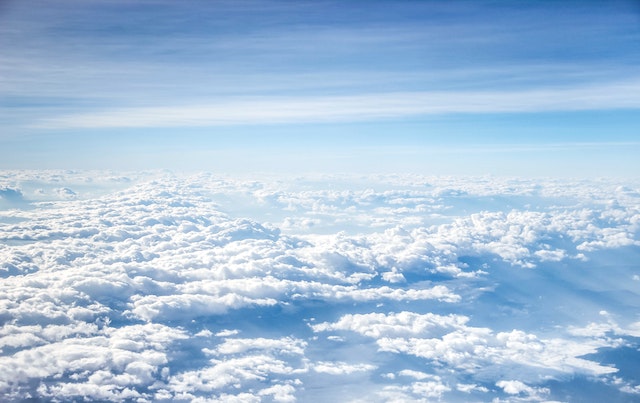
When did oxygen appear on Earth? Oxygen appeared on Earth between 2.4 and 2.2 billion years ago.
The air we breathe is not made up mostly of oxygen. It is 78.084% nitrogen, 20.934% oxygen, 0.934% argon, 0.035% carbon dioxide, and then a lot of other trace elements. Our bodies need the oxygen and the carbon dioxide to function, but the nitrogen is not chemically reactive and we breathe out exactly as much as we breathe in. We have evolved to live with 20.934% oxygen. If the amount of oxygen goes down, such as at the top of Everest, we cannot survive. Yet, Earth didn’t always have this much oxygen.
The sun and all of the planets in the solar system formed about 4.6 billion years ago. There was a huge amount of gas and dust circling in space. Something, perhaps simply gravity, perhaps a shockwave from a nearby supernova explosion, caused the gas and dust to start rotating faster until it became a solar nebula, which is a rotating disk of gas and dust. As it span faster and faster, the molecules started clumping together, and then gravity took over as it got larger. The sun became large enough that nuclear fusion began. 99% of all the dust and gas went into the sun. The other 1% stuck together as planets, and the rest is history.
The early Earth was a ball of molten rock and the atmosphere was mostly hydrogen and helium. The heat from the Earth gave these elements so much energy that they all flew off into space. The Earth was beginning to cool when another planet struck it, about 100 million years, forming the moon and making Earth into a molten ball again. As the Earth cooled, which took maybe 500 million years, liquid water formed and the heavier elements sank to the center of the planet, which is why we have an iron core. Volcanoes spewed carbon dioxide, nitrogen, ammonia, hydrogen, and some oxygen into the air, forming Earth’s second atmosphere. It was made of approximately 95% carbon dioxide, 3% nitrogen, and a mix of the other gases. The atmosphere stayed like this for almost 2 billion years.
So, what happened? Why did the atmosphere change? The answer appears to be life. Approximately 3.8 billion years ago microbes appeared in the liquid oceans. How is a question for another day, but these microbes released methane into the atmosphere. This methane is a greenhouse gas and it helped to warm up the early Earth. That was necessary for the life that was to come because the sun at that time was only 70% as bright and as warm as it is today. This methane kept the planet warm enough that the oceans stayed liquid and other lifeforms could evolve.
The microbes that changed the atmosphere were called cyanobacteria. They can produce energy through photosynthesis, which means they use sunlight to convert carbon dioxide and water into carbohydrates. They release oxygen as a byproduct. These microbes appeared about 2.6 billion years ago and they started to release oxygen into the atmosphere. This had several effects. The first is that the amount of carbon dioxide in the atmosphere dropped, reducing the greenhouse effect and cooling the planet. Between 2.4 billion and 2.2 billion years ago, there appear to have been three major ice ages on Earth. Each time, the ice age would have lowered the activity of the microbes and the CO2 from volcanoes would have built up again, repeating the cycle. This probably went on until the Earth was warmed enough by the sun alone. The second thing was that the oxygen rose into the atmosphere and formed a protective layer of ozone over the Earth. This protects the Earth from the harmful ultraviolet radiation that comes from the sun. Without the ozone layer, it would have been very difficult for complex life to form.
The third thing it did was to kill all of the cyanobacteria that had produced it. They relied on carbon dioxide to make energy and oxygen is a highly toxic gas. The reason metals rust and go red is because of how toxic oxygen is. The build up of oxygen caused the first major extinction event on Earth. We don’t think of it as an extinction event because it paved the way for aerobic life to evolve, but it did wipe out most of the life on the planet. And, by 2.3 billion years ago, aerobic organisms had evolved to make use of the oxygen rich environment. And this is what I learned today.
Sources
https://www.noaa.gov/jetstream/atmosphere
https://www.tassomai.com/blog-content/2019/3/6/tough-tassomai-questions-earths-early-atmosphere
https://education.nationalgeographic.org/resource/formation-earth/
https://news.mit.edu/2016/oxygen-first-appearance-earth-atmosphere-0513
https://www.amnh.org/explore/videos/earth-and-climate/the-rise-of-oxygen/microbes
https://www.amnh.org/explore/videos/earth-and-climate/the-rise-of-oxygen/earth-without-oxygen
https://news.mit.edu/2016/oxygen-first-appearance-earth-atmosphere-0513
https://www.noaa.gov/jetstream/atmosphere
https://asm.org/Articles/2022/February/The-Great-Oxidation-Event-How-Cyanobacteria-Change
https://scijinks.gov/atmosphere-formation/
https://en.wikipedia.org/wiki/Great_Oxidation_Event
